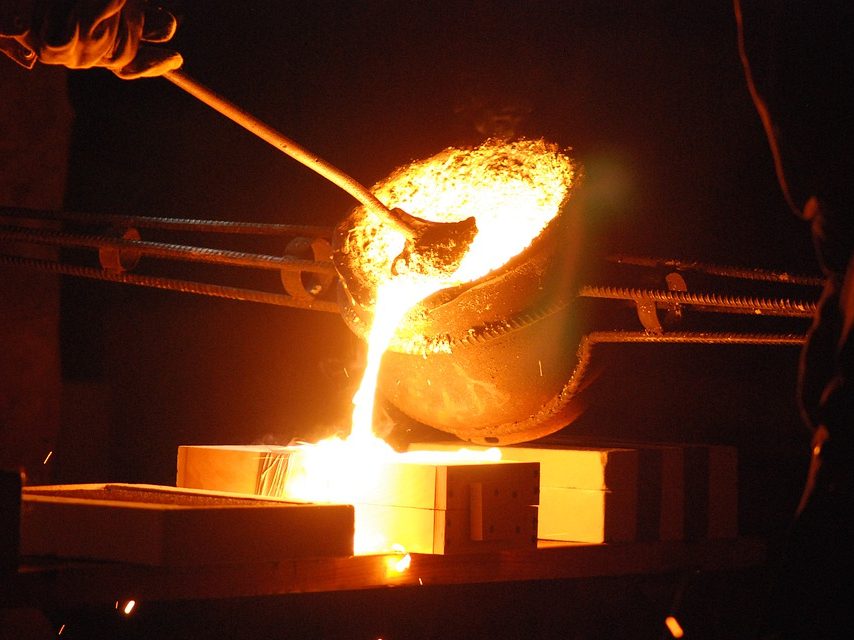ArcelorMittal Commits to Carbon-Neutral Steelmaking by 2050
The global steel industry emits the equivalent to the emissions from 569 coal plants every year.
Steelmaking behemoth ArcelorMittal has set out a path that would make it carbon neutral by 2050. The announcement follows the commitment made in 2019 for its European business to reduce emissions by 30 percent by 2030.
The company is working on several pilot technologies and two show promising results. One of them is the Hydrogen-Direct Reduced Iron route (DRI)—which uses hydrogen as reducing agent—and the other is the Smart Carbon route, a method that centers around modifying the blast furnace route to create carbon-neutral steelmaking through the use of circular carbon in the form of sustainable biomass or carbon-containing waste streams and carbon capture and use (CCU) and storage (CCS).
In Hamburg, ArcelorMittal has planned a demonstration Hydrogen-DRI plant, which is scheduled to start up in 2023. The facility is the only operational DRI-electric arc furnace plant in Europe. At the same time, it is working on constructing several commercial-scale projects to test a range of Smart Carbon technologies and aims to commence operating them in 2022.
Both routes have the potential to help the firm reach carbon neutrality in the steelmaking process by 2050, but the Smart Carbon strategy is believed to deliver results sooner. The Hydrogen-DRI route, the company said, is unlikely to be significant before 2030 due to the current high costs.
ArcelorMittal has previously outlined a framework environment needed to turn carbon-neutral steelmaking into reality. It includes mechanisms such as green border adjustments, access to abundant and affordable clean energy, policies that support the development of clean energy infrastructure, access to sustainable finance for low-emissions steelmaking and policies that support the transition to a circular economy.
The steel industry accounts for about seven percent of all climate pollution, and ArcelorMittal is responsible for nearly one percent, according to Mighty Earth. The global campaign organization reported in 2018 that the global steel industry emits 2.3 gigatons of carbon dioxide per year, which is the equivalent to the emissions from 569 coal plants.
READ ALSO: Challenge Accepted: Building for a Sustainable Future
Steel is one of the basic components of the built environment and more than half of the world’s steel is used in construction. This makes the construction industry responsible for a substantial amount of pollution before a project even breaks ground. In recent decades, enhanced design and operational efficiency advancements have cut climate pollution, as such, attention is shifting to embodied carbon—emissions resulting from the mining, manufacturing and transportation of a product.
Collective concern for the carbon neutrality mission
There are various initiatives underway that tackle the issue of embodied carbon of building materials. One is the newest LEED certification criteria—LEED v4—which includes an enhanced materials and resources section that awards more points to projects that use more sustainable materials. Another is led by Architecture 2030, a nonprofit that works hard to reduce greenhouse gas emissions from the global built environment. The entity also created the Carbon Smart Materials Palette, which offers guidance in choosing materials with reduced levels of embodied carbon. Together with the Carbon Leadership Forum—an industry-academic collaboration hosted at the University of Washington that focuses on reducing embodied carbon in building materials—they founded the Embodied Carbon Network, which aims to achieve carbon neutrality in the built environment by 2050.
Skanska and Microsoft are behind the Embodied Carbon Calculator for construction, a tool that is being developed by the Carbon Leadership Forum. The calculator is available as an open-source tool.
New legislation is also part of the growing momentum to address the embodied carbon. One such example is California’s Buy Clean California Act, which requires the state government to establish maximum acceptable global warming potentials for building materials used in state-funded infrastructure projects. The Washington state adopted a similar bill, and, beginning in 2023, state agencies, higher education institutions and nonprofit organizations receiving funding from the capital budget must provide a preference for low-carbon materials when awarding bids.
The Breakthrough Energy Coalition, a global group of private investors, companies and financial institutions founded by Bill Gates, is also working on mitigating climate change by decreasing carbon emissions. The group is providing capital to technologies, including the development of low-carbon building materials and clean energy.








You must be logged in to post a comment.